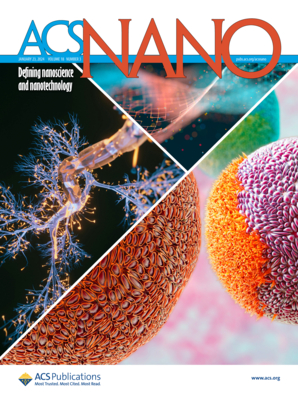One-Step Laser-Assisted Electrohydrodynamic Printing of Microelectronic Scaffolds for Electrophysiological Monitoring of Aligned Cardiomyocytes
IF 15.8
1区 材料科学
Q1 CHEMISTRY, MULTIDISCIPLINARY
引用次数: 0
Abstract
Micro/nanoscale bioelectronics show great promise to noninvasively monitor the electrophysiological activities of electroactive tissue constructs. However, the existing methods to incorporate microelectronics into biological scaffolds commonly rely on multiple microfabrication and manual assembly processes, restraining the controllability of the microelectrode arrangement and similarity of cellular organizations to native tissues. Herein, a laser-assisted electrohydrodynamic (EHD) printing strategy is proposed to directly fabricate a microfibrous architecture with built-in microelectronics for electrophysiological monitoring of aligned cardiomyocytes. A dual-nozzle EHD printing system is developed to sequentially print polycaprolactone (PCL) microfibers, gold microelectrodes, and high-density parallel microfibers in a layer-by-layer manner. The microelectrodes are precisely deposited between two layers of PCL microfibers and locally sintered by laser to achieve a conductivity of 2.82 × 106 S m–1. The encapsulated microelectrodes with a predefined exposure length can be freely and reproducibly printed at the specific position inside the microfibrous architecture and exhibit good electrical stability under cell-culturing conditions, which enables noninvasive, high-quality, and spatiotemporal electrophysiological readouts of aligned cardiomyocytes directed by the top parallel microfibers. The presented technique provides an innovative strategy to directly fabricate functional electroactive tissue constructs with built-in bioelectronics for in situ electrophysiological monitoring to advance the fields of drug testing and organ-on-chip systems.

求助全文
约1分钟内获得全文
求助全文
来源期刊

ACS Nano
工程技术-材料科学:综合
CiteScore
26.00
自引率
4.10%
发文量
1627
审稿时长
1.7 months
期刊介绍:
ACS Nano, published monthly, serves as an international forum for comprehensive articles on nanoscience and nanotechnology research at the intersections of chemistry, biology, materials science, physics, and engineering. The journal fosters communication among scientists in these communities, facilitating collaboration, new research opportunities, and advancements through discoveries. ACS Nano covers synthesis, assembly, characterization, theory, and simulation of nanostructures, nanobiotechnology, nanofabrication, methods and tools for nanoscience and nanotechnology, and self- and directed-assembly. Alongside original research articles, it offers thorough reviews, perspectives on cutting-edge research, and discussions envisioning the future of nanoscience and nanotechnology.
 求助内容:
求助内容: 应助结果提醒方式:
应助结果提醒方式:


